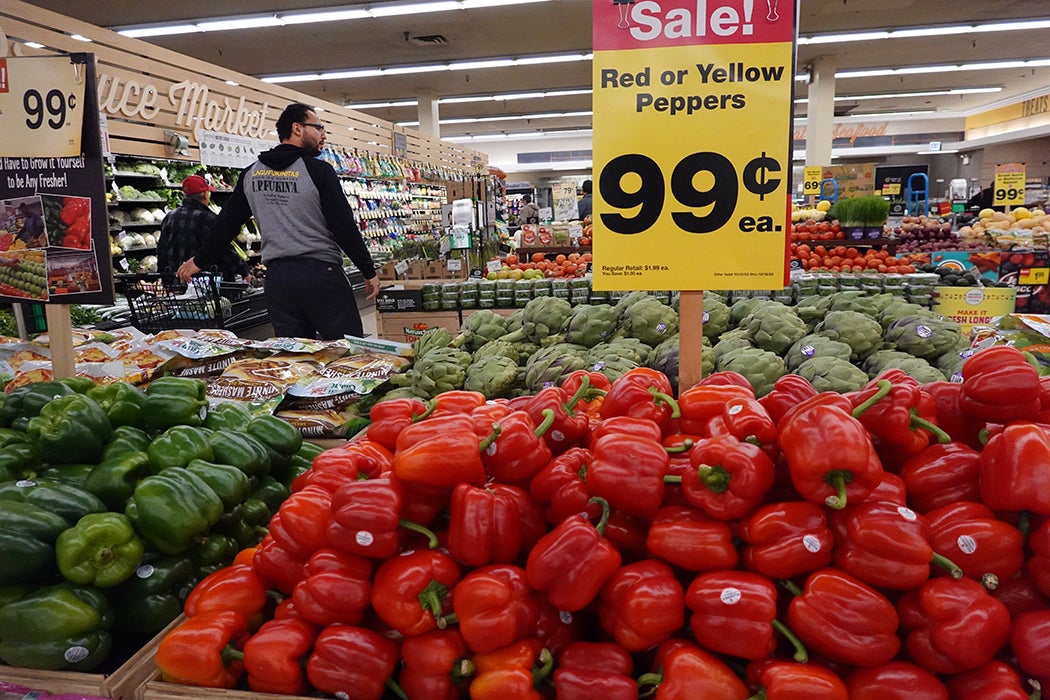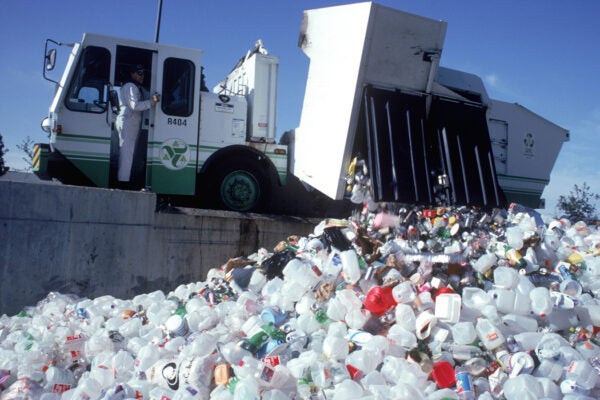It may not feel like it, but food has never been more accessible and affordable around the world. Surprisingly, this trend has come with putting food production further and further from the average consumer’s day-to-day experience. Rather than picking berries at the local farm, selecting produce from the neighborhood cooperative, or getting jugs of milk delivered straight to one’s home, most customers today buy food from their local supermarket—a sprawling, brightly lit warehouse full of packaged food as far as the eye can see. As major retailers compete to dominate the market, these superstores are open for longer hours in more locations. Global supply chains are becoming more efficient, lowering food prices while offering a wider array of options—everything from Mexican avocados to South African Rooibos tea is available in a US supermarket, usually 24/7.
At first glance, the trend of making food cheaper and more available seems to be a sign of progress. Yet, a look beneath the label and beyond the aisle reveals that our culture of food-on-demand has come at significant food justice costs.
Food industry actors are currently in a position of power vis-à-vis producers and consumers. As Eric Holt-Giménez and Yi Wang point out, agri-food companies have stripped farmers and food producers of their autonomy and decision-making power globally. In the US, farmers have few direct-to-consumer options to sell products, as vertically integrated food retailers push producer contracts to guarantee income in an increasingly uncertain climate. These contracts have forced farmers to obey the orders of agri-food corporations regarding what to grow and how to grow it—orders given based on metrics of crop yield maximization and land-use efficiency as opposed to nutritional quality or environmental safety. This has led to a preference for mono-agriculture, which supports the efficient mass production of foods but has immense environmental effects, including the destruction of ecosystems for agricultural use, one of the most significant contributors to anthropogenic climate change from the food sector.
Further downstream, the neighborhood grocer, lacking scale-related efficiencies to produce food at a cost competitive with major retailers, is out-competed in the market. It’s difficult for independent food operators (which can be producers, manufacturers, transporters, grocery stores, etc., who act outside the corporate food regime described by Holt-Giménez and Wang) to avoid going through major food retailers to reach customers. Some food manufacturers have embraced this limitation by vertically integrating through mergers and contracts, as smaller food manufacturers cut down on the transaction costs of dealing with customers, which theoretically drives down consumer costs. This level of integration also creates streamlined efficiency (the ability to mass produce the same foodstuffs), which promotes the availability and abundance of food in supermarkets—or at least some supermarkets. Nutritional, accessible, and culturally relevant food is disproportionately situated in middle- and high-income neighborhoods. This action that promotes food abundance in some areas and food deserts in others, based on income, creates a food apartheid environment.
Ashanté Reese, author of Black Food Geographies: Race, Self-Reliance, and Food Access in Washington D.C., defined “food apartheid” as the unequal access to healthy, sustainable, and culturally relevant food based on space, place, power dynamics, and structural inequality, additionally noting that food apartheid is “intimately tied to policies and practices that come from a place of anti-Blackness.”
Weekly Newsletter
For consumers who don’t have access to resources (including income and transportation), shopping for groceries becomes a burden. Major retailers contribute to the food apartheid environment by locating supermarkets based on profit. Even when stores are located in low-income neighborhoods, food prices gatekeep local consumers from choices. Additionally, it is well understood in scholarship that an individual’s dietary choices are influenced by the food available to them. Therefore, the nutritional quality of food depends on a consumer’s housing location, income, and transportation access.
If corporations were to factor in environmental quality, regulated market competition, and rectifying issues of food injustice into the pricing of food, it would become unaffordable. But that doesn’t mean settling for polluting local communities with agri-chemicals, allowing greenhouse gas emissions from agricultural to rise, or burdening communities with under-nourishing grocery stores. This could look like advocating for increased regulatory oversight of retail monopolies, encouraging the development of independent production and consumption arrangements (i.e., farmers’ markets, food cooperatives), and rethinking subsidies to benefit farmers, workers, and consumers as opposed to corporate shareholders. Food must remain affordable and become more accessible. In moving towards food justice for the whole system, especially consumers, there must be a reckoning with institutions that have been allowed to extract profits from one of humanity’s most vital sectors.
Support JSTOR Daily! Join our membership program on Patreon today.







